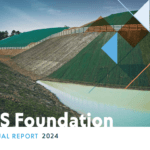 Problematic
Problematic
The sinkholes present a major problem in roads construction and urban development. The classical solutions used to limit the risk of cavities collapse are: filling of the void, construction of concrete bridges across the cavity areas, reinforcement by masonry piles, etc. Even if these methods offer a durable solution for long term security and stability, they present several inconvenient and limitations, such as the need of important material quantities; high CO2 emis-sions; need to localize the cavity and very high cost. Therefore, the use of a geosynthetic is a more attractive and economic solution.
Project Description
The project is located in Arras city (north of France) and concerns the securing of a public park built over an aban-doned chalk quarry. The cavities are 6 m high, 3.5 m wide and located between 14 and 20 m in depth. The main risk consists of the occurrence of a sinkhole with significant diameter.
Solution “Very high tensile strength geosynthetic reinforcement”
Usually, the geosynthetic reinforcement solution is used to secure the infrastructures over cavity zones, in association witha high embankment and good granular material. This case study presents a real challenge; it is one of the few or may be the only project where the installed geosynthetic has a tensile strength higher than 1800 kN/m. This project presents other specific conditions, they concern the low thickness of the soil over the geosynthetic layer and the reuse of the local materials for the embankment. So, the geosyn-thetic design and the construction steps required to take into ac-count particular hypotheses.
 Design Method
Design Method
RAFAEL design method (issued from national French research pro-ject) is used with some simplifications: no arching effect; no shear strength of the collapsed soil column; specific expansion coefficient for SLS and ULS.
 Geosynthetic Reinforcement
Geosynthetic Reinforcement
The choice of the geosynthetic is done according to several criteria: the characteristic tensile strength of the product, the nature of the polymer, application requirements. The product designed for this project is the geocmposite Geoter® FPET 1800. Is manufactured by warp knitting process combining woven geotextile with high te-nacity polyester cables. It combines reinforcement, filtration and separation. It allows water flow during the service stage and pre-vents fill material going through the geosynthetic in case of cavity collapse.
Further Information
For more information on Texinov Geosynthetics visit www.texinov.fr or contact geo@texinov.fr






















